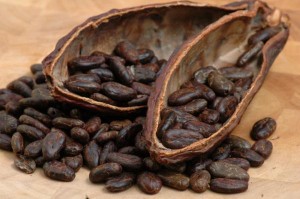Physical Address
304 North Cardinal St.
Dorchester Center, MA 02124

 The Cacao plant, that makes our beloved chocolate, has officially had it’s DNA sequenced. Oddly enough, more than one team of scientists, both of whom claim they were the first, has completed it.
The Cacao plant, that makes our beloved chocolate, has officially had it’s DNA sequenced. Oddly enough, more than one team of scientists, both of whom claim they were the first, has completed it.
In 2010, a team of researchers financed by MARS, the candy maker, announced that they had competed the sequencing of the Cacao plant. However, another candy maker, Hershey, also financed a group of scientists who completed and published their findings in the journal “Nature Genetics”. The Hershey team claims that they had completed the task first, yet they did not release their findings first as they wanted to go through the full peer review process before publishing.
Regardless of this Chocolate pioneering augment, the fact is that both teams were first since they sequenced different strains of the cacao plant. The Hershey team sequenced an ancient Mayan variety that was domesticated about 3000 years ago and team MARS sequenced the Matina chocolate plant which is supposed to represent the cultivar from which most cocoa in the world is cultivated.
So, why sequence this plant? Why sequence any plant? That topic is hotly debated. In theory, understanding and gaining genetic insights to cocoa can help aid in creating more disease resistant plants which can help farmers grow more cocoa since they would not be losing as many crops. And, crazy enough, it has been reported that they have also isolated the gene that determines the melting point of chocolate, which could help in a number of ways, including genetically modifying the plant so that scientists can change the melting point for whatever purpose suits a candy maker’s fancy.
Regardless of your feelings and thoughts about the sequencing of this fine plant, the truth is that every plant will eventually be sequenced and it’s no surprise that the chocolate plant was at the top of the list.
(Blog based on reports by the New York Times on December 27, 2010 and Genome Web Daily News on September 15, 2010.)